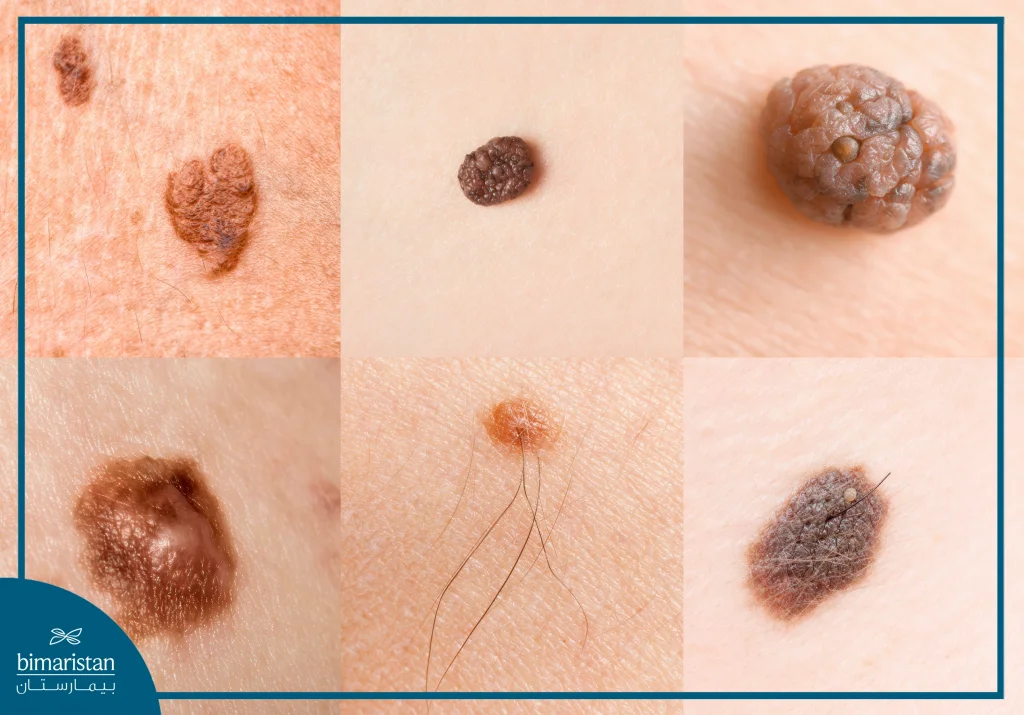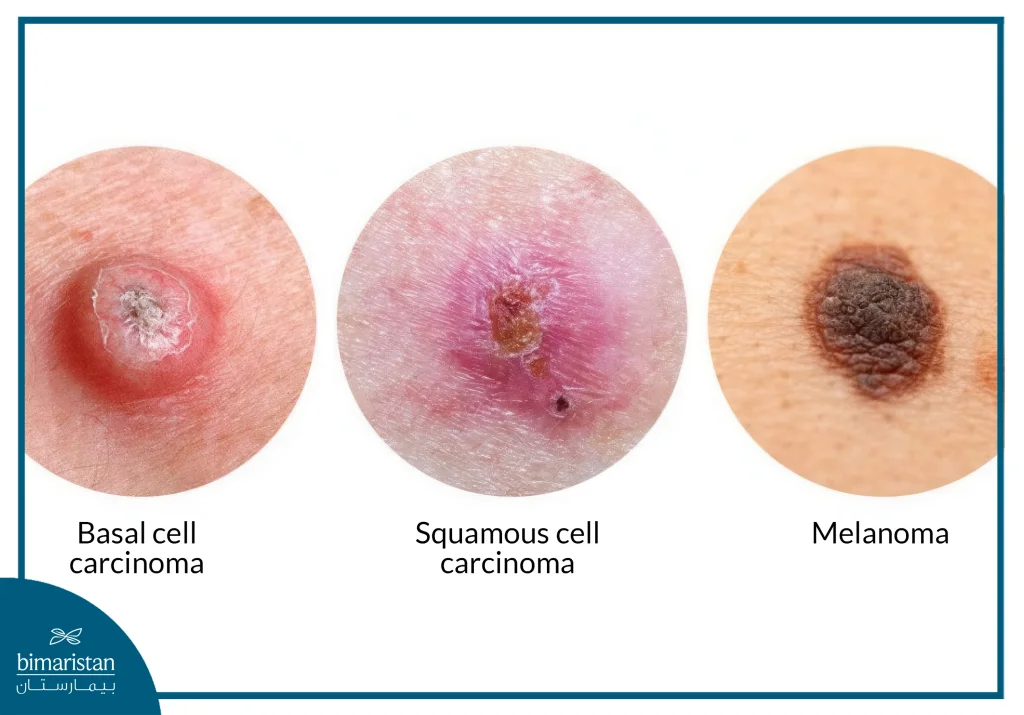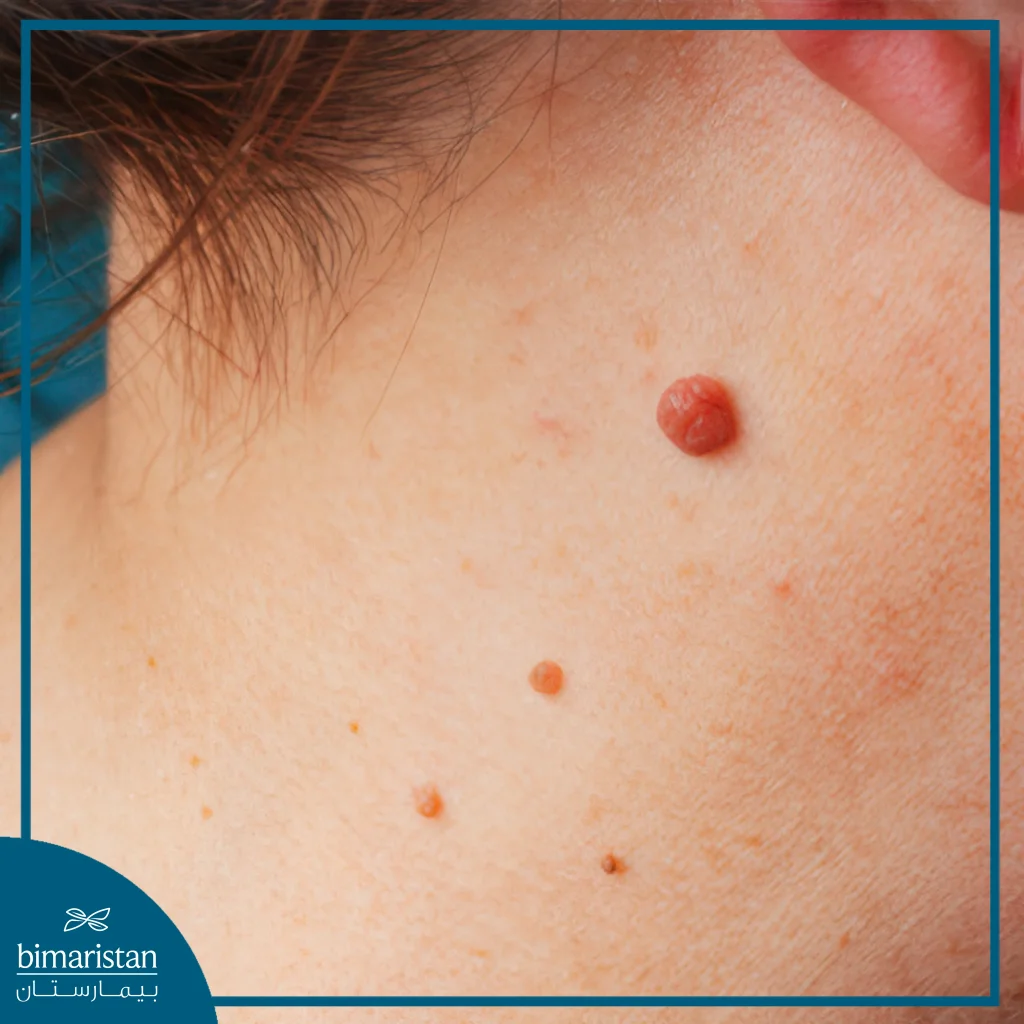Skin cancers are among the most common cancers in the world. They are diseases caused by excessive exposure to sunlight, which leads to mutations in skin cells and their rapid growth and spread into surrounding healthy tissues, destroying them. There are several types, symptoms vary from person to person, and they are often fully cured if diagnosed early.
What are skin cancers?
Skin cancers are diseases in which abnormal skin cells grow out of control due to unrepaired DNA damage, which stimulates the formation of mutations. These mutations lead to the rapid proliferation of skin cells and the formation of malignant tumors, often due to excessive exposure to sunlight. These cells may be benign, meaning they do not spread and do not cause harm, or they may be cancerous. Skin cancers most often occur in sun-exposed areas, but they are not limited to those areas only, as they can occur in areas not exposed to the sun, such as the genitals, palms, and soles.
There are several types of skin cancers, depending on the type of cells the cancer originated on, and it has been found to be more common in white people but can affect people of different ethnicities. Skin cancers can spread to neighboring tissues or other areas of the body if not detected early, and fortunately, if diagnosed and treated in their early stages, most cases are cured.

Causes of skin cancers
One of the most common causes is exposure of the skin to a large amount of sunlight, and the light emitted by the sun is a type of ultraviolet radiation, as ultraviolet light contains radiation that changes the DNA inside skin cells, which leads to skin cancers. Tanning beds are another source of UV radiation. Research has found that the risk of developing skin cancers from tanning beds is two times higher than spending the same amount of time in the sun.
Skin cancers may also occur on skin that is not overexposed to the sun, which means that other factors are involved. Health care professionals have discovered some factors that increase the risk, including a weak immune system and a family history of skin cancers.
Risk factors for skin cancers
Before age 50, skin cancers are more common in women; after 50, they are more common in men and about 30 times more common in whites than in blacks. Black and brown people usually tolerate relatively high levels of sun exposure safely without getting sunburned or significantly increasing their risk of skin cancers. Although anyone can get skin cancers, there are risk factors that make it more likely to occur in one person than another:
- Overexposure to sunlight
- Skin type, as there are skin types that are easily burned
- Living in a sunny or high-altitude climate
- Using tanning beds
- People with colored eyes, blonde hair, and fair skin due to the lack of melanin pigment and easy exposure to sunburn
- Many moles or irregularly shaped moles
- A family history of skin cancers
- History of having an organ transplant or taking medications that suppress or weaken the immune system
- A history of being exposed to ultraviolet light therapy to treat skin conditions such as eczema or psoriasis
- Frequent contact with carcinogenic chemicals such as coal and tar
Types of skin cancers
Non-melanoma skin cancers include two main types:
Basal cell carcinoma (BCC): It is considered the most common of the skin cancers, formed in the basal cells in the lower part of the skin’s outer layer, responsible for giving new cells and replacing dead cells. This cancer occurs in sun-exposed areas such as the head and neck, but can also occur in non-sun-exposed sites like the genitals. On white skin, it appears as a skin-colored or pinkish bump, while on darker skin it appears as a brown or black bump with white edges that may blister, inflame, bleed, heal, and then inflame again.
Squamous cell carcinoma (SCC): It arises in the squamous cells that form the middle and outer layers of the skin and act as a protective barrier. SCC is the second most common of the skin cancers and appears in sun-exposed areas, though in Black people it often appears in non-sun-exposed regions. This type of skin cancer presents as a nodule or ulcer.
Melanoma is the most dangerous type of skin cancers and fortunately has the lowest incidence rate. It originates from melanocytes in the skin—the cells that give the skin its color—and is highly malignant, with the ability to spread. Like other skin cancers, melanoma arises due to excessive ultraviolet exposure and appears in sun-exposed areas, often first signaled by a change in a mole or the appearance of a new pigmented growth.

Symptoms of skin cancers and how to recognize it
It can look quite different from person to person due to skin color, the size and type of cancer, and its location in the body. There are warning signs to watch out for and see your doctor for an early diagnosis, including:
- A new growth on the skin, such as a mole or bump
- A mole that changes in size, shape, or color, or a mole that bleeds
- Areas on the skin that look like scars or a rough spot in the skin
- Skin ulcers that don’t respond to treatment
- Pain, itching or raised ridges around the lesion
- A small, slow-growing, shiny, pink or reddish mass

Diagnosis of skin cancers
The diagnosis of skin cancer begins with the clinical story, in which the symptoms are asked and then the clinical examination in which any changes in any mole, freckles or other skin spots are detected or any new skin growth is observed as the doctor examines the scalp, behind the ear, fingers, buttocks and genitals. The patient should not apply any cosmetics or nail polish before the examination.
If an infection is suspected, a biopsy is the main diagnostic method, where a sample of the affected skin is taken and sent to a pathology laboratory, which shows whether the sample contains cancer cells. Additional tests may include imaging to examine or remove lymph nodes for signs of cancer. Doctors use Roman numerals from I to IV to indicate the stage of the cancer. Stage I cancer is small and confined to the affected area, while stage IV cancer is advanced and has spread to multiple areas of the body.
Skin cancers treatment methods
There are multiple treatment options. Treatment depends on the type of cancer, how far it has grown or spread, the location of the cancer, and the stage of the cancer:
- Surgery: Surgery is the main treatment for skin cancer and involves removing the cancer and surrounding healthy tissue. Most people undergo surgery only and do not need additional treatment, but some people may not be able to undergo surgery or may need other treatment after surgery. Mohs surgery: This type of surgery removes the cancer without removing much of the surrounding healthy skin and is used in areas where we want to preserve as much skin as possible, such as the nose. The doctor removes the layers of the tumor gradually and examines each removed layer until he makes sure that the removed skin layer is free of cancer, as this procedure allows the tumor to be removed with minimal damage to the skin layers.
- Cryotherapy: This method is used to treat small lesions or pre-cancerous lesions where the lesion is coated with a nitrogen solution that freezes it to fall off spontaneously.
- Radiation therapy: It uses high energy radiation and its applications include the difficulty of performing surgery on the area where the cancer is located, spreading the cancer widely, and minimizing the risk of cancer recurrence after surgery.
- Immunotherapy: This is a treatment that uses the body’s natural defenses (the immune system) to help eliminate skin cancer cells.
- Photodynamic therapy: This is a two-stage treatment that uses a drug that makes the skin sensitive to light and then shines a special type of light on the cancer area that destroys it.
- Chemotherapy: Drugs that are toxic to cancer cells, often a topical treatment in the form of a cream, and rarely intravenously.
- Targeted therapy: It uses drugs that target chemicals found in cancer cells, making it easier to kill them.
- Scraping and electrodrying: Scraping the top of the skin cancer and then burning the base of the cancer with an electric needle.
Preventing skin cancers
The cornerstone of prevention is avoiding excessive exposure to the sun and thus avoiding exposure to UV rays and artificial sources such as tanning beds and The risk of injury can be minimized by:
- Stay out of the sun as much as possible during the afternoon when it is strong and scorching
- Use a year-round sunscreen with SPF=30 or higher and reapply every two hours
- Wear protective clothing such as dark, tightly woven clothing with arms and legs covered, and wear a hat that prevents the sun’s rays from reaching the face and ears.
- Not using tanning beds
- Regular skin check-ups and follow-ups to detect any new changes or new skin growths
- UV protection is important in all seasons, not just summer
Is skin cancer fatal?
Most skin cancers can be treated and cured with the help of early detection, and most skin cancer deaths are caused by melanoma. While basal cell carcinoma and squamous cell carcinoma are not usually life-threatening, melanoma is the most dangerous type of skin cancer, as melanoma has a high potential to spread to other parts of the body.
Sources:
